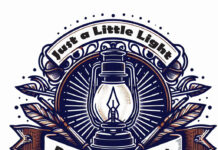By Ron Wilson, director of the Huck Boyd National Institute for Rural Development at Kansas State University.
Multicultural diversity. It’s a term with various meanings, but today we’ll learn about an example of multicultural diversity which was a matter of life and death – and I mean that literally. During World War II, the U.S. military utilized cultural diversity by asking 29 Navajo to develop an unbreakable code for battle operations. The last of those 29 passed away in 2014, and he was a man with ties to rural Kansas.
Chester Nez was one of the original 29 Navajo involved in this project. In 2011, he published a book called Code Talker.
Chester was from New Mexico where he grew up herding sheep and goats at the Navajo nation. At age 9, he was forced to go to boarding school by the federal government. Students were required to speak English and were punished for speaking Navajo.
By 1941, he was in boarding school in Arizona when the word came that Japan had bombed Pearl Harbor. Navajo men considered themselves warrior people, so they were prepared to fight.
Meanwhile, the U.S. military was gearing up for battle, including exploring how to communicate confidentially with our troops. Japanese cryptographers had broken every code the U.S. had tried.
Then an engineer who had grown up as the son of a missionary on a Navajo reservation had the idea of using the Navajo language as a military code. He knew the language was incredibly complex and had never been written down. He convinced the Marine brass to give it a try.
Marine recruiters came to Arizona and explained they were looking for young men who were fluent in English and Navajo to serve on a secret mission. Chester Nez signed up. “I just wanted to serve my country,” he said.
In basic training, the native endurance and sharpshooting ability of the Navajo earned high praise. Then the young Marines were informed of their mission: To devise and use an unbreakable code, based on the Navajo language. “Silently, I thanked the teachers…for forcing me to learn English. And I thanked my family for keeping me fluent in Navajo,” Chester wrote. The nature of their mission was to be totally classified.
The young Marines developed an alphabet using Navajo words as letters of the alphabet and using common words as symbols. For example, a submarine became an iron fish, a tank became a tortoise and a grenade was a potato. In 1942, they were deployed to the South Pacific.
At Guadalcanal, Chester was assigned to a skeptical communications officer. As a test, the Marines sent a message using their existing mechanical coding device. It took four hours to transmit and decode. But the Navajo did the same message in two and a half minutes, with perfect accuracy! Soon the Navajo were sent into combat, doing grisly, grueling work.
Their code was never broken. Code talkers took part in every Marine battle in the Pacific war, but their role remained strictly classified.
After the war, Chester Nez returned home where he had not yet finished high school. One of his former teachers who was part Native American told him about Haskell High School in Lawrence, Kansas. Chester went to Haskell, which would later become Haskell Indian Nations University. He found jobs working on nearby farms, potentially near communities such as Eudora or Lecompton, population 602 people. Now, that’s rural.
Chester went on to study fine art for three years at the University of Kansas, then married and embarked on a career with the Veteran’s Administration in New Mexico until retirement.
In 1968, the work of the Code Talkers was finally declassified. In 2001, Chester and other Code Talkers received the Congressional Gold Medal from President Bush at the U.S. Capitol. In 2014, Chester passed away at the age of 93.
One radio intelligence officer said, “Navajo talkers were worth their weight in gold…Their contributions…were unmeasurable.”
Multicultural diversity. The term can have many meanings, but in this case, the diversity of the native language added to the strength of the nation’s defense. By harnessing such diversity, the military made a difference by strengthening its ability to succeed.
Thank you, Chester Nez.




